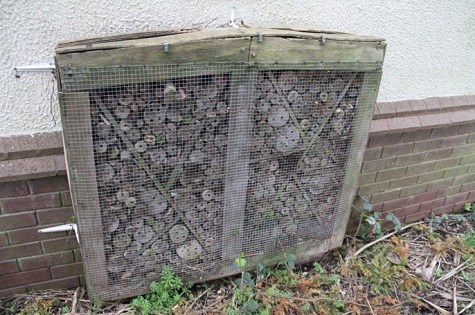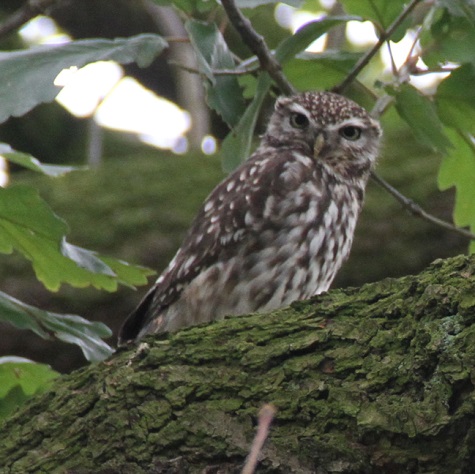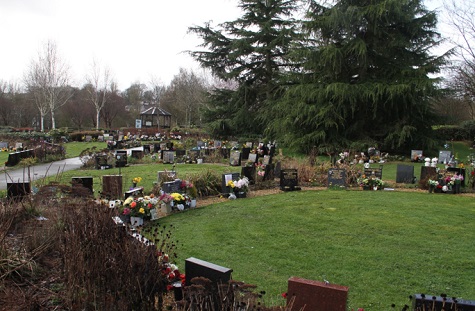Last week I had the opportunity to carry out some Green Flag judging, calling in at Queens Park in Crewe and Bradwell Cemetery in Newcastle Under Lyme - both interesting sites.
Queens Park, Crewe
My first visit was Queens Park, a large Victorian park, owned and managed by Cheshire East Borough Council.
I was met on site by Ruth Morgan their head of parks, who along with other council staff and friends of the park volunteers, gave me a guided walk around the park.

The heritage of Crewe is heavily linked to the expansion of the railway in the first half of the 19th Century. The park was given to the people of Crewe by the London & North Western Railway Company and opened in 1887.
The park was designed by Francis William Webb (chief engineer LNWR) and Edward Kemp (Celebrated Victorian Landscape Gardener – Head Gardener at Birkenhead park). The park covers forty-five acres and is oval in shape, surrounded by an external carriage-drive and enclosed by railings and gates at each compass-point.
The northern half of the park is mostly flat and slopes gently towards the southern half which originally formed part of the valley of the River Waldron which now flows within a culvert under the Queens Park Lake. The 4.5 acre lake incorporates three evenly spaced islands in its central portion.

The park had a major make over via a civil engineering project from 2006 – 2016, supported by many partners but primarily The Heritage Lottery Fund and Crewe and Nantwich Borough Council (eventually evolving into Cheshire East Council) - who have continued to ensure the park enjoys a high maintenance programme and care.
Today the park demonstrates how a park designed in the 1870s, to reflect Crewe’s railway heritage and presented to the town for the benefit of the whole community, can be a restored to deliver a much-loved park that meets the needs of the community in the 21st century.
While walking around, there was no shortage of wildlife enjoying the variety of habitats that have been formed over many years. There were plenty of mature trees, wet land areas, long grass and wildflower areas, along with a large expanse of water. All have played their part in attracting a diverse selection of birds, mammals and insects.

The council have also installed several bird and bat boxes, bug hotels and have changed their maintenance regimes to help encourage more wildlife. I was told that they have a resident owl that is regularly seen flying during the day and they were confident that I may see him in one of three trees.

With camera in hand, I duly wandered over and soon found to my delight the owl was sitting on one of the lower branches and was not fussed by my presence. A lovely end to my visit to Queens Park.
Bradwell Cemetery, Newcastle Under Lyme
My second visit was to Newcastle Crematorium also known locally as Bradwell Cemetery, Newcastle Under Lyme. Officially opened in 1965, the crematorium grounds and memorial gardens are set in approximately 12 acres. However, much of it was left as undeveloped fields until 1993 when the council embarked on a huge landscaping project to create new monthly Gardens of Remembrance - an individual garden to represent each month of the year, and a designated memorial garden for children and babies.

The planting and design of the gardens was established and finally completed in 2003. As well as the Gardens of Remembrance, there are also the Cremated Remains Grave areas; these are in two phases, the Petal Garden grave area (set out in the design of seven flowers, each with a total of six petals) and the Leaf Garden grave area (set out in a leaf design pattern of 8 leaves).

Having been a cemetery officer myself, I always find it interesting to see how other councils run and maintain their cemeteries. I found these new landscaped areas fascinating and provided a great ambience to the cemetery.
Like all public parks, cemeteries play an integral part of community life are important assets. We must continue to preserve them for the next generation.
Parks and green open spaces offer numerous values, including:
Environmental benefits: Green open spaces play a crucial role in improving air quality by absorbing pollutants, filtering carbon dioxide, and producing oxygen. They also reduce the effects of climate change by reducing the urban heat island effect and storing carbon.
Health benefits: Green open spaces provide opportunities for physical activity and exercise, which is essential for maintaining a healthy lifestyle. Studies have also shown that access to green spaces reduces stress, anxiety, and depression and promotes mental well-being.
Social benefits: Parks and green open spaces bring people together and create opportunities for social interaction, community events, and cultural activities. They also provide a safe and inclusive space for children to play and for people to gather and relax.
Economic benefits: Parks and green open spaces can increase property values, attract tourists, and stimulate economic growth by creating jobs and supporting local businesses.
Biodiversity benefits: Green open spaces provide habitat and support biodiversity by offering shelter, food, and breeding grounds for a variety of plant and animal species.
Overall, parks and green open spaces are essential for creating healthy, vibrant, and sustainable communities.
As next week will be Easter Monday, TurfPro will be taking a week's break.